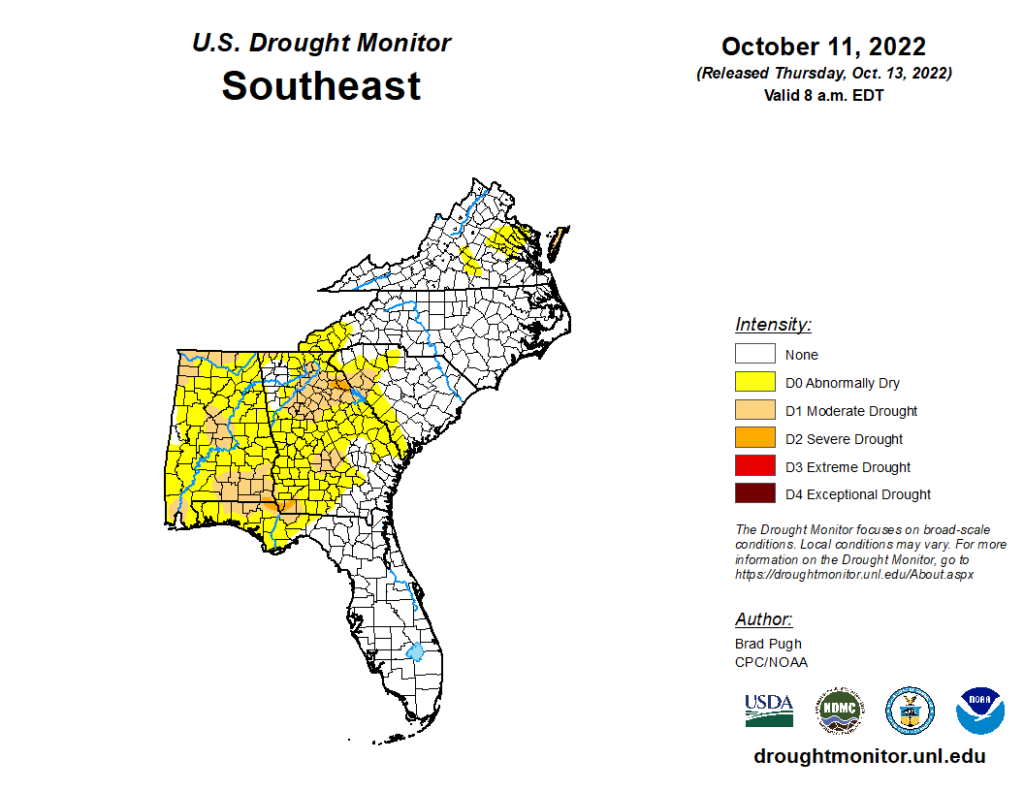By Clint Thompson
Dry conditions persist across the Southeast. It is only going to get drier. All of Alabama and most of Georgia is at least abnormally dry, as well as the Florida Panhandle.

Pam Knox, University of Georgia Extension agricultural climatologist, believes conditions will worsen over the next couple of weeks.
“It’s dry, and I don’t think we’re going to see much improvement in the next month. I looked at the long-range forecast model and it looks like for a lot of Georgia, the Panhandle, South Carolina, North Carolina and the southern half of Alabama, they’re practically going to get no rain through the first week of November,” Knox said.
The majority of Florida has sufficient moisture following Hurricane Ian. But that won’t last much longer.
“Even in the areas where it did rain from the hurricane, they look okay now, but I don’t know how long that’s going to last. They’re not supposed to get much rain either,” Knox said.
Some areas, especially in North Georgia and various parts of Alabama, are moderately dry. The current conditions are concerning, especially if they linger into the winter months where rainfall is a priority.
“Think of it like a bank account. In the winter you build up your balance and then all of the bills start coming due around April 1 when the plants start growing again. Whatever you put into the bank over the winter months is really what you have to work with in the summer as a reserve,” Knox said. “As long as it rains regularly that isn’t so important, but if you go through a dry spell as we often do, then you need that soil moisture available to keep the plants going.
“Unfortunately, we’re going into a third La Niña winter, and typically in the Southeast, La Niña is warmer and drier than usual. The long-range forecast that came out last week supports that.”









